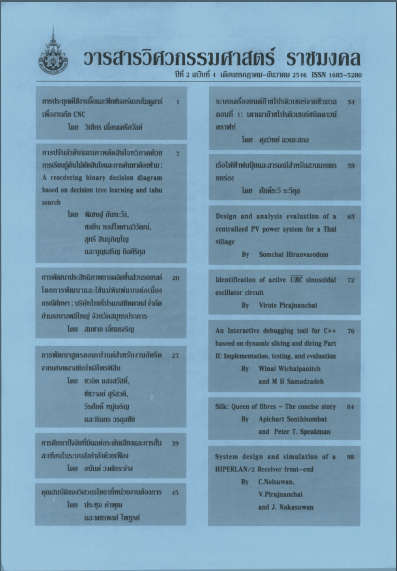Design and analytical evaluation of a centralized PV power system for a Thai Village
Main Article Content
Abstract
A sample village with 100 households in a rural area of Thailand is selected for design of a centralized PV power system with stand –alone type. This paper focuses on the design and analytical evaluation of PV system for a typically rural Thai villages based on climatic data at the design location, daily load demand, I-V characteristic of solar module and so on. Prediction of PV system performance using a computer programme, especially the best matching between the array size and storage battery capacity has been done. The daily electrical energy needs of a village can be broadly designed into four categories, namely [a] for each household, [b] for community centre, [c] for control and battery room and [d] for public used. A mini grid system within the village is designed for a case study the according to the farthest household from a control building. Conductor sizes, types of cable, grounding and lightning conductor have been calculated. Although this design does not minimize system cost mathematically, it gives a feasible design at the practical level on the basis of experiential knowledge
Article Details
The manuscript, information, content, picture and so forth which were published on Frontiers in engineering innovation research has been a copyright of this journal only. There is not allow anyone or any organize to duplicate all content or some document for unethical publication.
References
B, wiengmoon at. el., PV Battery Charging at Huay Dua Village in Thailand, Proc. of 2"d
WCPEC, Vienna, Austria, pp. 2991-2993,1989.
H. Saha, Design of a Photovoltaic Electric Power System for an Indian Village, Solar
Energy, 27 (103-107) 1981.
Meteorological Department, Data of Thailand:25 years period (1951-1975), Ministry of
Communications, Bangkok, Thailand, 1977.
MJohansson, Lightning Protection of Building and Their Contents: a review of current practice, Technical note in 1/94, BSRIA,1994.


